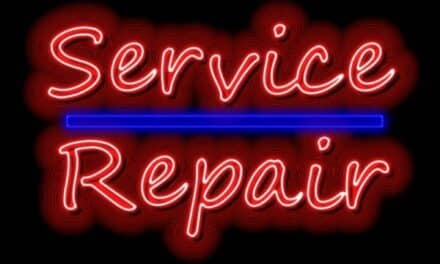Inefficient processes with depot repair orders can affect quality and supply chain costs
By Roy Lobb
For healthcare facilities to achieve great overall quality in their response to patient care, medical equipment must be kept in excellent condition at all times. A crucial element of this? The repair process—since revenue can be lost due to improperly scheduled maintenance.
Overall, medical depot repairs can have three problems: high costs, inefficiencies, and long lead times. However, intelligent consolidation can produce substantial savings for healthcare facilities because it will affect two main areas within the repair process: quality and supply chain costs. Learn more below.
Quality Medical Equipment and Patient Care
It’s no surprise that if medical devices aren’t in peak condition, safety issues and potential delays in patient care can ensue. With some manufacturers not offering repair and maintenance options or offering these options at a premium, the depot repair market has seen growth from secondary service providers.
Nevertheless, some secondary suppliers have long lead times because it can take time filling out paperwork, making the process cumbersome. For example, it can take up to two months to get infusion pumps back from a supplier’s repair service.
Another reason for long lead times is the fact that most suppliers have to send to more than one vendor to get the repair done. Furthermore, some suppliers can charge up to 40% more due to repair capabilities.
In particular, quality is something to consider with patient monitoring repairs. To filter through all the suppliers, look for who conducts extensive testing by asking these questions:
- “Does the supplier have 24 hours of comprehensive testing to make sure a repair is properly completed?”
- “Does the same person run the tests, or are there multiple eyes reviewing the equipment’s serial number, operation, shipping address, etc.?”
Patient monitoring equipment and infusion pumps account for two of the most common equipment repairs. And the latter can present numerous challenges for facilities since some infusion pump repairs can’t be done in the field and must be sent to either a manufacturer or secondary supplier for restoration. But by looking for ways to streamline depot repair orders with a single procurement platform, facilities can eliminate the possibility of equipment downtime and improve quality.
Moreover, with options such as PartsSource’s patented Supplier Ranking Module, healthcare facilities can leverage qualitative and quantitative data to evaluate the breadth of depot repair offerings. This type of technology can improve lead times and help maintain quality patient care as a result of increased visibility.
Also, another item to consider when evaluating the depot repair process for simplicity is the capability of the supplier. If software update is needed, a facility may need to reach out to the OEM or leverage a company who has the capability to repair at the component level. Many secondary suppliers do not usually repair at this level because each piece of equipment’s software is uniquely serialized to that unit.
There are many items to consider when reviewing the quality of depot repairs, which is why it is prudent to simplify the process by finding a supplier with a single platform. Innovative approaches to consolidating suppliers beyond traditional boundaries are critical to maximizing the value from repair parts. Choose a platform that leverages evidence-based data to help make better decisions that affect the quality of equipment and patient care.
Hidden Expenses and Warranties
With multivendor contracts or improper maintenance scheduling, medical equipment service repairs can be costly. Healthcare facilities can get several prices for a repair because the market has always done tiered pricing. Therefore, they should seek a supplier who has flat-rate pricing for equipment repairs. Otherwise, facilities will need to service equipment based on quantity, prolonging the repair from getting completed in a timely manner.
Additionally, facilities may find themselves in a situation where they are seeing additional charges for items that were assumed to be covered under warranty. For example, suppose a healthcare facility needs to have an infusion pump repaired. To do this, the facility sends the equipment to the supplier—who, in turn, returns it to the facility as quickly as possible. No problem, right?
But what if the infusion pump then has another, unrelated issue, requiring repair No .2? The healthcare facility thought it was covered under warranty, so it contacts the supplier. The supplier may respond to the new problem as an unrelated issue; therefore, the pump may not be covered under warranty. As a result, the healthcare facility will need to pay for a second medical equipment service repair.
A better scenario? Consolidating all medical depot repairs into one procurement platform, which enables facilities to maintain control over the entire process—in addition to saving time and increasing device performance. And in today’s healthcare environment, such achievements are noteworthy, indeed.
Roy Lobb is global biomedical product director at Aurora, Ohio-based PartsSource. For more information, contact 24×7 Magazine chief editor Keri Forsythe-Stephens at [email protected].



